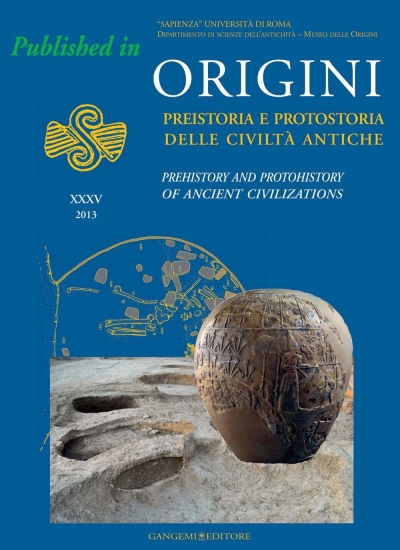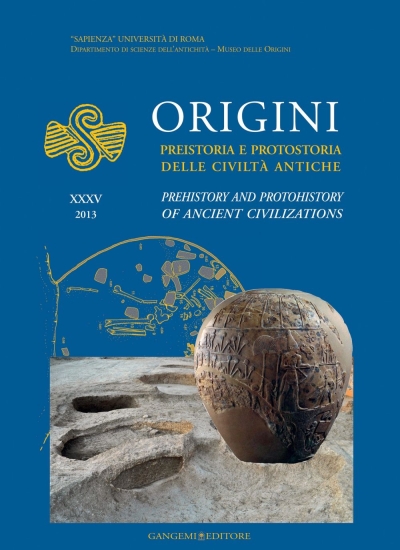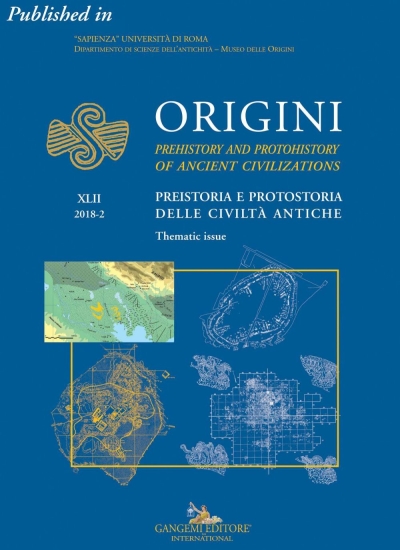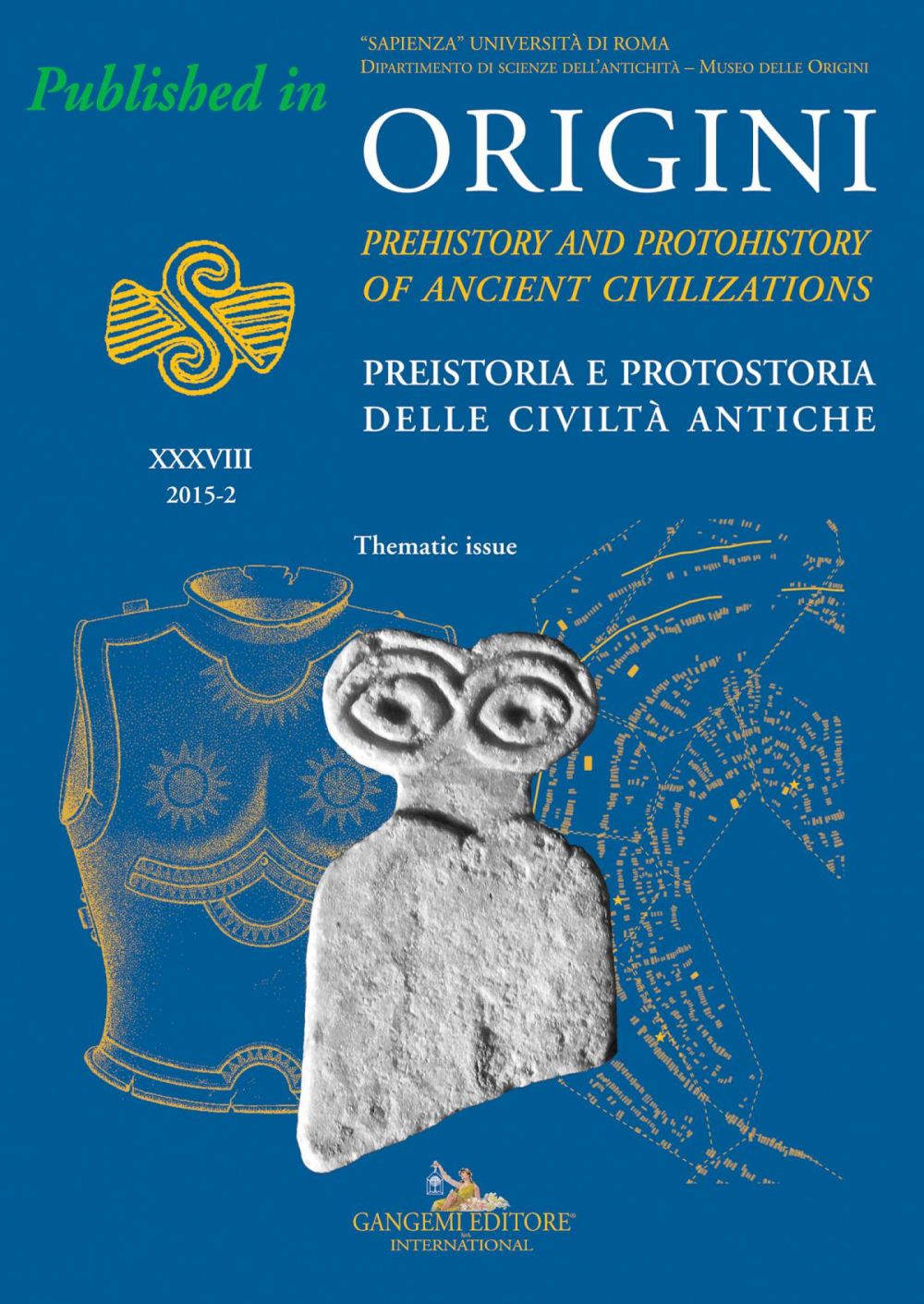Chiefdom societies in prehistoric Malta?
Published in Origini n. XXXVIII/2015-2. Rivista annuale del Dipartimento di Scienze dell’Antichità – “Sapienza” Università di Roma | Preistoria e protostoria delle civiltà antiche – Prehistory and protohistory of ancient civilizations
Autore:
Editore:
Anno:
2017
ISBN:
9788849248012
Layout:
Reflowable
DRM:
Adobe (The downloaded file has the .acsm extension and is converted into the purchased format upon installation on your eReader)
Description
As is well known, years ago C. Renfrew adopted the social model of chiefdom to explain the emergence of outstanding megalithic centres in the Maltese archipelago in the mid-4th millennium BC. This represented a pioneering attempt to apply to a Prehistoric Mediterranean context the model, advanced by Neoevolutionary American anthropologists, that exemplifies unequal societies with an established hierarchy based on birthrights. Since then, the concept of chiefdom has been widely debated among scholars. In order to test the actual applicability of the chiefdom model in a real case study, which appears more fruitful than an abstract speculation, the authors reconsider the specific prehistoric context of Malta between the 3500 and the 1500 BC. As for the Temple period, a central question is posed: are the megalithic centres the materialised traces of an early emergence of social inequality in the central Mediterranean? Moreover, the possible reasons behind the collapse of Temple period society are discussed, as well as the socio-ideological transformations occurred during the Early Bronze Age. | Come è noto, diversi anni fa C. Renfrew utilizzò il modello sociale del chiefdom per spiegare l’affermazione di imponenti centri megalitici nell’arcipelago maltese intorno alla metà del IV millennio a.C. Questo tentativo pionieristico si proponeva di applicare a un contesto preistorico mediterraneo tale modello (formulato da alcuni antropologi neoevoluzionisti statunitensi), che esprime la connotazione specifica di società disuguali con una gerarchia stabile basata su diritti di nascita. Da allora il concetto di chiefdom è stato ampiamente dibattuto tra gli studiosi. Per cercare di verificare l’attuale applicabilità del modello del chiefdom a un caso di studio reale, gli autori riprendono in esame il contesto maltese tra il 3500 e il 1500 a.C. Per quel che riguarda il Periodo dei Templi, si pone un quesito principale: i centri megalitici rappresentano le tracce materializzate di una precoce insorgenza della disuguaglianza sociale nel Mediterraneo centrale? Inoltre sono discusse le possibili ragioni alla base del collasso della società del Periodo dei Templi, così come le trasformazioni avvenute durante il Bronzo antico.
Tags
Localization: Malta
35.90100937, 14.41371879
35.90100937, 14.41371879
By the same author
Preistoria e protostoria delle civiltà antiche - Prehistory and protohistory of ancient civilizations
 ORIGINI – XXXVIII
Preistoria e protostoria delle civiltà antiche - Prehistory and protohistory of ancient civilizations
ORIGINI – XXXVIII
Preistoria e protostoria delle civiltà antiche - Prehistory and protohistory of ancient civilizationsAndrea Cardarelli, Gangemi Editore
Preistoria e Protostoria delle Civiltà Antiche - Prehistory and Protohistory of Ancient Civilizations
 ORIGINI - XLII
Preistoria e Protostoria delle Civiltà Antiche - Prehistory and Protohistory of Ancient Civilizations
ORIGINI - XLII
Preistoria e Protostoria delle Civiltà Antiche - Prehistory and Protohistory of Ancient CivilizationsMarcella Frangipane, Gangemi Editore
Published in Origini n. XXXV/2013. Rivista annuale del Dipartimento di Scienze dell’Antichità – “Sapienza” Università di Roma | Preistoria e protostoria delle civiltà antiche – Prehistory and protohistory of ancient civilizations
 THE HUMAN FACTOR IN THE TRANSFORMATION OF SOUTHERN ITALIAN BRONZE AGE SOCIETIES: AGENCY THEORY AND MARXISM RECONSIDERED
Published in Origini n. XXXV/2013. Rivista annuale del Dipartimento di Scienze dell’Antichità – “Sapienza” Università di Roma | Preistoria e protostoria delle civiltà antiche – Prehistory and protohistory of ancient civilizations
THE HUMAN FACTOR IN THE TRANSFORMATION OF SOUTHERN ITALIAN BRONZE AGE SOCIETIES: AGENCY THEORY AND MARXISM RECONSIDERED
Published in Origini n. XXXV/2013. Rivista annuale del Dipartimento di Scienze dell’Antichità – “Sapienza” Università di Roma | Preistoria e protostoria delle civiltà antiche – Prehistory and protohistory of ancient civilizationsAlberto Cazzella, Gangemi Editore
Preistoria e protostoria delle civiltà antiche - Prehistory and protohistory of ancient civilizations
 ORIGINI - XXXV
Preistoria e protostoria delle civiltà antiche - Prehistory and protohistory of ancient civilizations
ORIGINI - XXXV
Preistoria e protostoria delle civiltà antiche - Prehistory and protohistory of ancient civilizationsMarcella Frangipane, Gangemi Editore
Published in Origini n. XXXVIII/2015. Rivista annuale del Dipartimento di Scienze dell’Antichità – “Sapienza” Università di Roma | Preistoria e protostoria delle civiltà antiche – Prehistory and protohistory of ancient civilizations
 THE ORIGINS OF INEQUALITY
Published in Origini n. XXXVIII/2015. Rivista annuale del Dipartimento di Scienze dell’Antichità – “Sapienza” Università di Roma | Preistoria e protostoria delle civiltà antiche – Prehistory and protohistory of ancient civilizations
THE ORIGINS OF INEQUALITY
Published in Origini n. XXXVIII/2015. Rivista annuale del Dipartimento di Scienze dell’Antichità – “Sapienza” Università di Roma | Preistoria e protostoria delle civiltà antiche – Prehistory and protohistory of ancient civilizationsAndrea Cardarelli, Gangemi Editore
Published in Origini n. XXXVIII/2015-2. Rivista annuale del Dipartimento di Scienze dell’Antichità – “Sapienza” Università di Roma | Preistoria e protostoria delle civiltà antiche – Prehistory and protohistory of ancient civilizations
 CHIEFDOM SOCIETIES IN PREHISTORIC MALTA?
Published in Origini n. XXXVIII/2015-2. Rivista annuale del Dipartimento di Scienze dell’Antichità – “Sapienza” Università di Roma | Preistoria e protostoria delle civiltà antiche – Prehistory and protohistory of ancient civilizations
CHIEFDOM SOCIETIES IN PREHISTORIC MALTA?
Published in Origini n. XXXVIII/2015-2. Rivista annuale del Dipartimento di Scienze dell’Antichità – “Sapienza” Università di Roma | Preistoria e protostoria delle civiltà antiche – Prehistory and protohistory of ancient civilizationsAlberto Cazzella, Gangemi Editore
Published in Origini n. XLII/2018. Rivista annuale del Dipartimento di Scienze dell’Antichità – “Sapienza” Università di Roma | Preistoria e protostoria delle civiltà antiche – Prehistory and protohistory of ancient civilizations
 SETTLEMENT PATTERNS AND DEVELOPMENTS TOWARDS URBAN LIFE IN CENTRAL AND SOUTHERN ITALY DURING THE BRONZE AGE
Published in Origini n. XLII/2018. Rivista annuale del Dipartimento di Scienze dell’Antichità – “Sapienza” Università di Roma | Preistoria e protostoria delle civiltà antiche – Prehistory and protohistory of ancient civilizations
SETTLEMENT PATTERNS AND DEVELOPMENTS TOWARDS URBAN LIFE IN CENTRAL AND SOUTHERN ITALY DURING THE BRONZE AGE
Published in Origini n. XLII/2018. Rivista annuale del Dipartimento di Scienze dell’Antichità – “Sapienza” Università di Roma | Preistoria e protostoria delle civiltà antiche – Prehistory and protohistory of ancient civilizationsAlberto Cazzella, Gangemi Editore
Preistoria e protostoria delle civiltà antiche - Prehistory and protohistory of ancient civilizations
 ORIGINI – XXXVIII
Preistoria e protostoria delle civiltà antiche - Prehistory and protohistory of ancient civilizations
ORIGINI – XXXVIII
Preistoria e protostoria delle civiltà antiche - Prehistory and protohistory of ancient civilizationsAndrea Cardarelli, Gangemi Editore
Preistoria e Protostoria delle Civiltà Antiche - Prehistory and Protohistory of Ancient Civilizations
 ORIGINI - XLII
Preistoria e Protostoria delle Civiltà Antiche - Prehistory and Protohistory of Ancient Civilizations
ORIGINI - XLII
Preistoria e Protostoria delle Civiltà Antiche - Prehistory and Protohistory of Ancient CivilizationsMarcella Frangipane, Gangemi Editore
Published in Origini n. XXXV/2013. Rivista annuale del Dipartimento di Scienze dell’Antichità – “Sapienza” Università di Roma | Preistoria e protostoria delle civiltà antiche – Prehistory and protohistory of ancient civilizations
 THE HUMAN FACTOR IN THE TRANSFORMATION OF SOUTHERN ITALIAN BRONZE AGE SOCIETIES: AGENCY THEORY AND MARXISM RECONSIDERED
Published in Origini n. XXXV/2013. Rivista annuale del Dipartimento di Scienze dell’Antichità – “Sapienza” Università di Roma | Preistoria e protostoria delle civiltà antiche – Prehistory and protohistory of ancient civilizations
THE HUMAN FACTOR IN THE TRANSFORMATION OF SOUTHERN ITALIAN BRONZE AGE SOCIETIES: AGENCY THEORY AND MARXISM RECONSIDERED
Published in Origini n. XXXV/2013. Rivista annuale del Dipartimento di Scienze dell’Antichità – “Sapienza” Università di Roma | Preistoria e protostoria delle civiltà antiche – Prehistory and protohistory of ancient civilizationsAlberto Cazzella, Gangemi Editore
Preistoria e protostoria delle civiltà antiche - Prehistory and protohistory of ancient civilizations
 ORIGINI - XXXV
Preistoria e protostoria delle civiltà antiche - Prehistory and protohistory of ancient civilizations
ORIGINI - XXXV
Preistoria e protostoria delle civiltà antiche - Prehistory and protohistory of ancient civilizationsMarcella Frangipane, Gangemi Editore
Published in Origini n. XXXVIII/2015-2. Rivista annuale del Dipartimento di Scienze dell’Antichità – “Sapienza” Università di Roma | Preistoria e protostoria delle civiltà antiche – Prehistory and protohistory of ancient civilizations
 CHIEFDOM SOCIETIES IN PREHISTORIC MALTA?
Published in Origini n. XXXVIII/2015-2. Rivista annuale del Dipartimento di Scienze dell’Antichità – “Sapienza” Università di Roma | Preistoria e protostoria delle civiltà antiche – Prehistory and protohistory of ancient civilizations
CHIEFDOM SOCIETIES IN PREHISTORIC MALTA?
Published in Origini n. XXXVIII/2015-2. Rivista annuale del Dipartimento di Scienze dell’Antichità – “Sapienza” Università di Roma | Preistoria e protostoria delle civiltà antiche – Prehistory and protohistory of ancient civilizationsAlberto Cazzella, Gangemi Editore
Published in Origini n. XLII/2018. Rivista annuale del Dipartimento di Scienze dell’Antichità – “Sapienza” Università di Roma | Preistoria e protostoria delle civiltà antiche – Prehistory and protohistory of ancient civilizations
 SETTLEMENT PATTERNS AND DEVELOPMENTS TOWARDS URBAN LIFE IN CENTRAL AND SOUTHERN ITALY DURING THE BRONZE AGE
Published in Origini n. XLII/2018. Rivista annuale del Dipartimento di Scienze dell’Antichità – “Sapienza” Università di Roma | Preistoria e protostoria delle civiltà antiche – Prehistory and protohistory of ancient civilizations
SETTLEMENT PATTERNS AND DEVELOPMENTS TOWARDS URBAN LIFE IN CENTRAL AND SOUTHERN ITALY DURING THE BRONZE AGE
Published in Origini n. XLII/2018. Rivista annuale del Dipartimento di Scienze dell’Antichità – “Sapienza” Università di Roma | Preistoria e protostoria delle civiltà antiche – Prehistory and protohistory of ancient civilizationsAlberto Cazzella, Gangemi Editore


